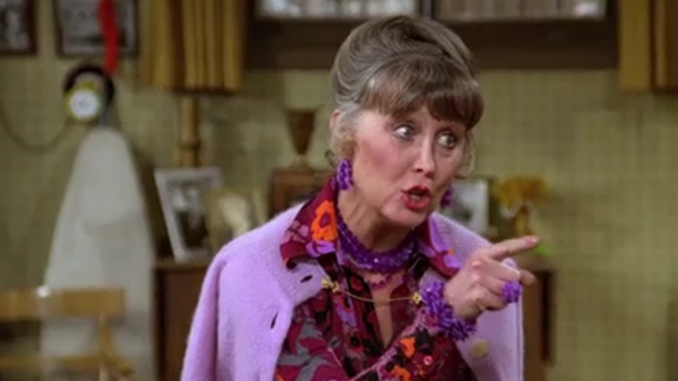
“I came into the show without any real idea of what they wanted,” she wrote.
Being comfortable in your own skin is no easy feat; it takes years of practice. However, a lesser-known task that is no less difficult is the art of becoming comfortable in someone else’s skin, a job that no one understands better than an actor.
You might remember Betty Garrett as the Bunker’s neighbor, Irene from All in the Family. In her book, Betty Garrett and Other Songs: A Life on Stage and Screen, Garrett explained that she was often chosen for older women roles, a typecast that she relished. However, when she won the role of Edna on Laverne & Shirley, she explained that she simply couldn’t get a proper read on the character, and how she should play her.
“I had a hard time at first because I came into the show without any real idea of what they wanted,” she wrote. “‘Think of something that’s kind of a signature for yourself,’ one of the writers said to me, ‘something that is easily identifiable with you like that big L Laverne always wears on her sweaters.’ The first season, I tried everything — piling my hair up inside different wigs, wearing a variety of clothes — but I just could not get a handle on who this woman was supposed to be.”
They say that it’s important to dress for the job that you want, and ultimately, that’s what Garett had to do in order to become Edna.
“In the second season, they brought in a costume designer who put me in high-heeled shoes, too much jewelry, flashy clothes, and big earrings, and did my hair in a kind of chignon with fluffy bangs and a crazy ponytail hanging out,” she wrote. “All of a sudden, it was as if a light bulb came on in my head. That was when Edna Babish-De Fazio was truly born.”
While Garett grew more comfortable playing Edna with time, she recognized that the Laverne & Shirley character was not unlike famed roles in her acting past.
“I saw Edna as this sort of jazzy, middle-aged lady clomping around in ankle strap shoes, wearing clothes and jewelry that were not in good taste for someone her age, and who was generally kind of dizzy,” she wrote. “But she had that same sort of sensible element in her that Irene Lorenzo did.”
